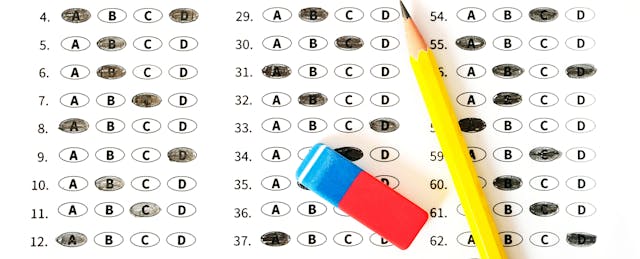Leaders of the College Board, which operates the SAT, wants a retest of its effort to help admissions officials understand the relative privilege of test takers.
Last year the nonprofit began piloting what it called the Environmental Context Dashboard, a system that assigned a score of 1 to 100 to every student who took the SAT to indicate the strength of the educational resources in their high school and neighborhood. But after the project was profiled in May by the Wall Street Journal, which described the new metric as an “adversity score,” critics questioned how any group could put a number on something like adversity.
So on Tuesday, the College Board announced that it has revamped the effort—slightly—and it is making a renewed attempt to explain the project to colleges and the public.
For one thing, officials put a new name at the top of the effort. Instead of the Environmental Context Dashboard, the free service for admissions officials will now be called Landscape.
And Landscape will no longer boil its information down to a single number. But the service will still present all the same statistics about the high school and neighborhood environment of each test taker. It just won’t do the math to average those key metrics into a single number (though college officials could easily compute that same total themselves).
Perhaps the most significant change is that the College Board now says it plans to share, within a year, all of this data with test takers and the public. The previous dashboard was only available to admissions officials, and students had no way to know what environmental score they had been given.
“It’s a humbler view by the College Board of its role,” said David Coleman, CEO of the organization, in an interview with EdSurge. “It makes very clear that the College Board does not aim to score adversity. We score achievement.”
Coleman added, though, that the group is not walking away from its plan to put the SAT scores of each student in context, which he said is an issue of equity and fairness. His argument is that colleges have long gathered this kind of information about the strength of high schools on their own, but that most colleges were not able to assemble equivalent information for every school in the country.
“We are proud of providing consistent information,” Coleman said. “But we learned that a single score was reductive—was misleading—so we abandoned it.”
Another problem with reducing the statistics in the dashboard to a single score, he said, was that students and schools wanted to know what that score was. “You might have the crazy idea that you can change your adversity score,” by somehow gaming the system, he added.
No Significant Change for Colleges
College officials shrugged off the changes as largely cosmetic.
“We’re not going to use this any differently than we did before,” said Eric Maloof, vice president for enrollment management at Trinity University, in Texas, which tested the service in two previous admissions cycles. “We will use Landscape the same way this year as we did last.”
Maloof said that his college was never focused on the combined score anyway. “It just pulls together in one dashboard a snapshot of publicly available aggregate data in a really efficient way that our counselors can read,” he said. “It’s helping us identify students who excelled in their likely context… This never replaced first-hand information that we had in the file for any student.”
“There’s been a lot of misinformation of what [the dashboard] does and its intended use by colleges,” he added. “I think this is a positive step in clarifying that.”
In a Tweet, Jeff Selingo, author of several books on higher education, said the changes amounted to “quite a word play” by the College Board.
Why change the name to Landscape?
“The reason for the change is that the meaning of landscape makes it very clear that it’s background information, and that the most important information is [still] the individual information” like the SAT test score, said Coleman.
The College Board has been testing the service with about 50 colleges, and officials say they plan a wider rollout by fall of 2020.


